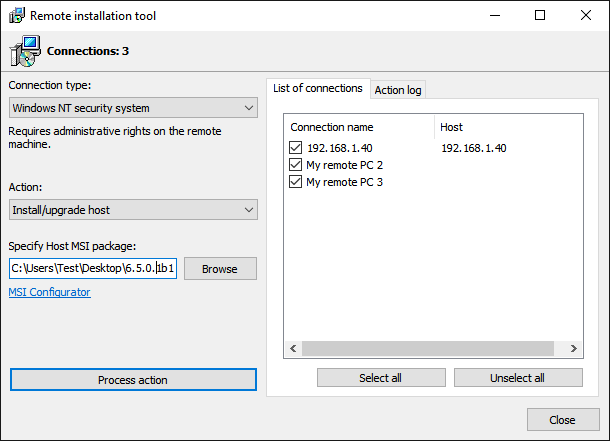

The tool is commonly used for reading the configuration of the local computer. However, on its View menu, you’ll find the Remote Computer item.

Because the tool doesn’t allow you to enter username and password, you have to launch it with sufficient credentials for the remote computer.

The output of msinfo32 can’t be configured however, the tool offers extensive information about integrated system components or essential Windows settings. #CAN I USE REMOTE UTILITIES VIEWER ON SELF SERVER WINDOWS# In many cases, msinfo32 should be sufficient to get the information you are looking for. The number of parameters that wmic displays when you run it with the option /? are overwhelming. However, if you don’t want to exhaust the limits of the tool’s possibilities and just want to retrieve system information, you will quickly feel at home. If you start wmic without parameters, it will switch to interactive mode, which you can recognize by its prompt “wmic:root\cli>.” With /node:, you can now connect to a remote computer. If you want to access the remote computer with alternate credentials, you can submit username and password, as in the following command: /node: /user: /password: One useful aspect about this command is that it allows you to connect to multiple computers by entering a list of comma-separated computer names. Once you are connected, you can read system information with the help of the wmic aliases. They encapsulate WMI classes and give them a name that is easier to remember. To display the long list of wmic aliases, you just have to enter /?. If you have found the component that interests you, you can navigate to the object’s properties with the help parameter.įor instance, since the get method is used to read information, you can display a list of available properties about the operating system with OS get /?. So, if you want to know when the system last booted, you would enter OS get LastBootUpTime.Įxtensive outputs of the program are hard to read on the console. It is important to note that practically all non-alphanumeric characters in the parameters of the wmic commands are interpreted as delimiters, so you have to enclose a computer name such as “server-core” within double quotes.įor example: dmachannel get /all /format:htable For this purpose, you can export the information to an HTML table (/format:htable) or to the CSV format (/format:csv) to read the data in a web browser or in Excel, respectively. The list below gives you an overview of all global switches and aliases.



 0 kommentar(er)
0 kommentar(er)
